Tell the truth now – have you ever watched Enter the Dragon or The Karate Kid and then tried (and failed) to imitate those slick fighting moves? Whether we’ve done it to fend off bullies, impress someone, tried it as a HIIT workout, used it to improve body image and self-confidence or even as a form of self defence, we have all tried our hand at martial arts at least once.
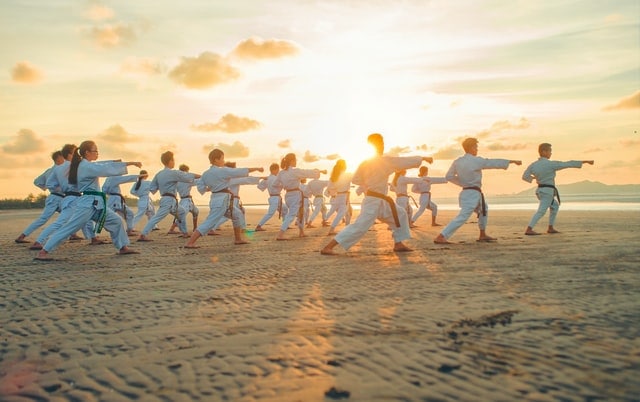
In the 2000 Sydney Olympic Games, Lauren Burns won the first-for-Australia gold medal for Taekwondo, triggering a wave of classes and new obsessions. While it might seem intimidating to a beginner, learning martial arts is not impossible no matter how old you are. It is an activity that is accessible to people of all ages and can be learned by anyone with the desire and the discipline.
Before we begin, we’ll take a quick look at the different types of martial arts so you can decide which form is right for you. Let’s get kicking, but be careful with those nunchucks!
Which sports are included under martial arts?
Martial arts have become synonymous with the combat techniques of East Asia, but the original meaning referred to fighting systems in Europe in the 1550s. The term literally means “arts of Mars” after the Roman god of war.
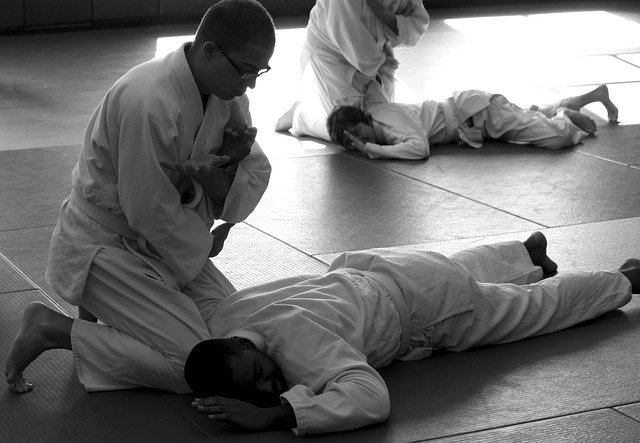
In their original form, martial arts are an organized system and tradition of combat anywhere in the world. The reasons for martial arts in different parts of the world include:
- Self-defence
- Enforcement of military rules and general laws
- Competitive sports and other competitions
- Physical, spiritual and mental development
- As a form of entertainment
- To gain self-confidence and inculcate self-discipline
- As a part of personal training
The number of martial arts practised around the world is as innumerable as the cultures and traditions in which they have their genesis. The most dominant martial arts are:
Karate
Originating from Okinawa in Japan, it teaches hand-based combat for self-defence. With Karate, you’ll learn how to fight and defend without weapons. Most training focuses on blocking the opponent, exerting force and impact with the bare feet or hands, as well as shins, knees and forearms.
Krav Maga
Krav Maga combines some of the best techniques from different martial arts. It focuses on aggressive moves to end combat situations in the fastest way possible. Krav Maga utilizes real-world techniques like violent sneak attacks and intimidation to prepare a student for realistic fight situations. An important component of the training includes honing one’s instinct and awareness to be ready at all times.
Judo
This form of martial arts also originated in Japan and uses grappling as the central theme. It focuses on capturing the force of the attacker and using it against them. Although the name translates to ‘gentle way’, Judo is a respected sport that can be used in combat to control and disable the opponent.
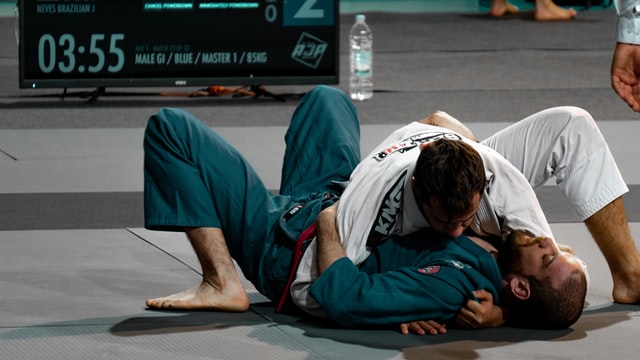
Taekwondo
Started in Korea, this form of combat shares some similarities with karate but emphasizes the use of feet and kicks. It is a series of moves that can be used to defend and disable an opponent. Training includes skills like agility, power, speed, and using gravity and centres of balance to fight more effectively. While it is now largely a competitive sport, it originated as a form of self-defence and was used in the military. The focus on using legs as weapons allows the fighter to stay farther out of reach than if using arms.
Muay Thai
A Thai-based form of martial arts that largely makes use of shins, elbows, fists and knees. It is known as the ‘art of eight limbs’ because it utilizes so many body parts. It makes extensive use of foot sweeps that can be used in a real fight to disable the opponent. The training for Thai boxing or Muay Thai is helpful because it teaches the fighter how to use skills like footwork to prevent being struck.
Aikido
Another Japan-based form of combat, this is a peaceful form of fighting with a focus on training oneself and learning self-discipline, or defeating the opponent without causing any harm. A large part of the training comprises physical conditioning and learning blocking or throwing techniques. After this, the student will learn breathing exercises and defence techniques that keep in mind the well-being of the opponent.
Jiu-Jitsu
A Brazilian style of fighting, this form teaches how to fight larger opponents by bringing them to the ground. It focuses on disabling and sending the opponent to the ground, but it also teaches the student how to control an attacker and keep them in the phase of the fight that is most suited to one’s greatest strengths.
You can start at the beginner level for all forms of combat and work your way up the ladder till you feel confident about entering competitions. All forms can be practised up to a professional level while judo, karate, and taekwondo are part of the Olympics.
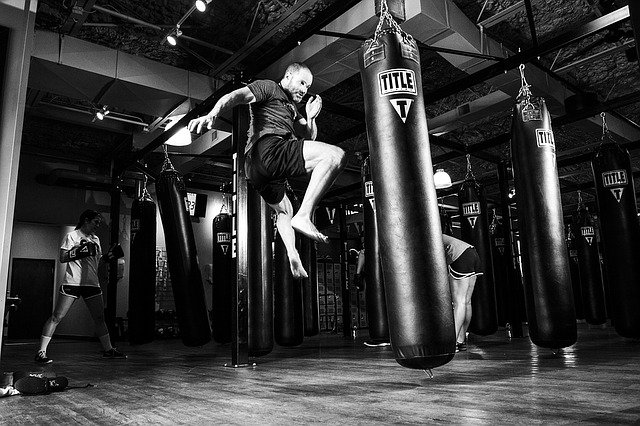
What are the benefits of martial arts?
Martial arts are a great form of exercise and offer several physical benefits. However, unlike other forms of exercise, they also stand to offer numerous mental and other benefits:
Physical Benefits
- Muscular strength
- Effective back exercises
- Speed
- Co-ordination
- Flexibility
- Cardiovascular fitness
- Improved muscle memory
Mental Benefits
- Increased confidence
- Relieving stress and alleviating tension
- Goal-setting and accomplishing
- Respect and discipline
- Positive attitude
- Awareness and mindfulness meditation
- Ability to outsmart opponents
- Increased focus and concentration
In addition to the above benefits, most forms of martial arts lead to spiritual development as you learn about the culture and traditions from which they originate. They offer confidence-building and self-defence strategies that are suitable to the age of the participant.
Which is the best form of martial arts for self-defense?
For many people, starting martial arts classes is important because it offers them weapon-free skills for self-defense. In our troubled times, martial arts classes can teach you how to protect yourself in the case of an attack. Many parents, especially young girls, see this as an important skill for their child to learn.
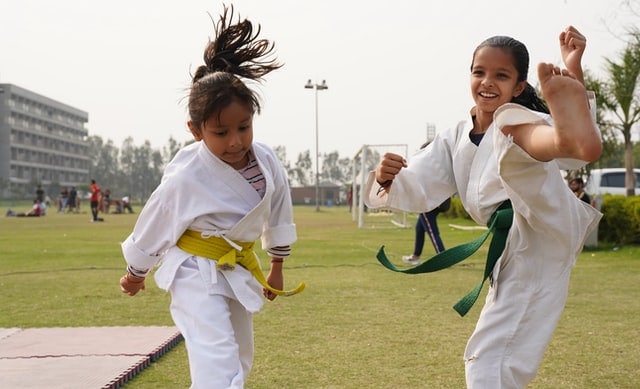
For many people, learning martial arts is part of a healthy aging practice. Not all martial arts are easy or quick to learn and earn certifications, so if you’re looking for a few basic moves that can help you learn self-defense, you might want to consider these classes:
Jiu Jitsu
Jiu-Jitsu teaches you moves that will help you learn basic defence against common weapons like knives, blunt instruments, or daily objects. It also helps you disable and control an attacker. In our urban lifestyle, it is more likely that you will need these skills than anything more aggressive.
Boxing
Boxing will teach you the basics of throwing a punch and defending yourself from an attacker. It uses body weight, controlled force, and technical information that will enable you to handle yourself in a street fight, a bar brawl, or in the case of an attack.
Muay Thai
Muay Thai combines boxing with using your legs as weapons. Being able to deploy all four limbs in attack situations is valuable, so this could be a useful form of martial arts for those interested in self-defence.
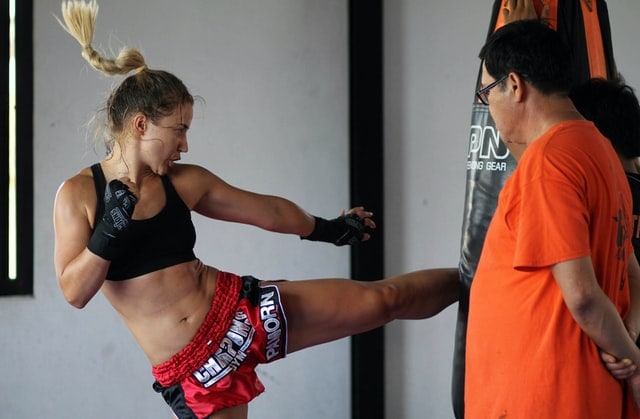
Krav Maga
This is a more intensive martial art. It is a more modern form of self-defence than the others because it was developed for the Israel Defence Force. It combines many techniques from boxing, jiu-jitsu, karate, and other forms of martial arts, but assumes that the attacker will not use specific moves or play fair. This can be useful for someone looking to learn self-defence because you are trained to be prepared for anything.
What will martial arts do for you?
There are many types of martial arts but no matter which form you choose, the most important benefit you will gain is the physical and mental conditioning you need to stand up in a combat or attack situation.
For most of us, violence comes as a shock and catches us off guard. With martial arts training, you sharpen your instincts and your preparedness to be aware of threats or dangerous situations.
With any martial arts training, we become more confident in our bodies and feel stronger. By doing exercises for flexibility, you’ll be able to use your body more effectively.

All forms of martial arts focus on self-discipline and a healthy lifestyle. You’ll find yourself eating healthy and using foods for strength and performance, cutting back on unhealthy indulgences, and becoming a fitter version of yourself. This helps you develop the ability and the readiness to defend yourself and others.
All forms of martial arts teach you techniques that you can use in self-defence. You’ll learn how to use your own body in more effective ways. You’ll learn to be quick on your feet, how to throw a punch, how to defend your vital organs or your head, and how to disable or control your opponent. These skills set you apart from someone who doesn’t have the training or the instinct to ward off an attacker.
The benefits of a martial arts lifestyle
Whether you are already in training or haven’t yet decided, you can switch to a diet recommended by martial arts trainers. The rules of martial arts diets are focused on moderation, superfoods, powering your body and providing the right ingredients for optimum performance.
Small meals at regular intervals
When you have an active lifestyle, you’re more likely to have a bigger appetite. You should eat small light meals every 4 hours to keep your metabolism active and ensure your body doesn’t go into starvation (calorie-saving) mode.
Balance your diet for better strength
Don’t avoid any food group, but plan it so that your body gets what it needs when it needs. This means eating enough protein to retain muscle mass, understanding what are whole grains and using them in your diet, adding carbs for post-training boosts, and using healthy fats like olive oil or nuts to keep your system working well.
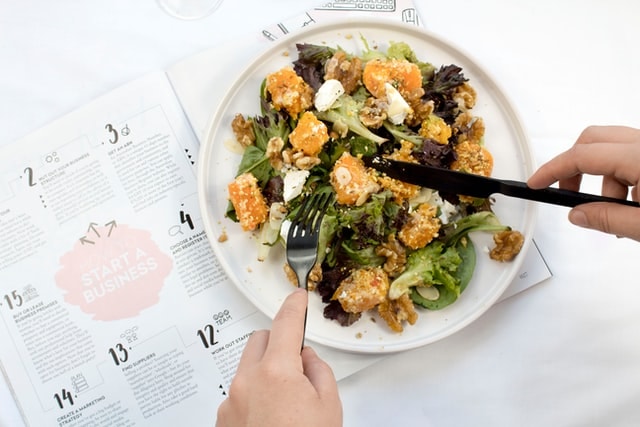
Raw ingredients
Add fruit and veggies to your diet to provide fibre, minerals, antioxidants, and vitamins. A good meal by any martial arts standard includes protein and a large side of grilled or steamed veggies.
Drink water
Every sport or martial arts instructor will tell you it is crucial to stay hydrated. When your body gets enough water, it can perform all the functions required to stay fit. This means the elimination of toxins, digestive functions, muscle and bone recovery, and mental and mood health. During martial arts training, you’ll perspire and lose water, so you should be replacing it during the day.
Don’t overeat
The concept of small frequent meals is useful for keeping your metabolism level high, but also to prevent you from overeating. Martial arts training emphasizes discipline and self-awareness and eating too much goes against both.
When you overeat, your stomach expands, pushing into your other organs and creating that feeling of discomfort. Your organs have to work harder to digest large amounts of food, drawing energy away from your body and mind and to your stomach. You’ll feel sluggish after over-eating – and nobody can be prepared or alert if they are sleepy. Remember to eat what your body needs, not what your brain or your emotions are telling you to eat.
Am I too old to start learning now?
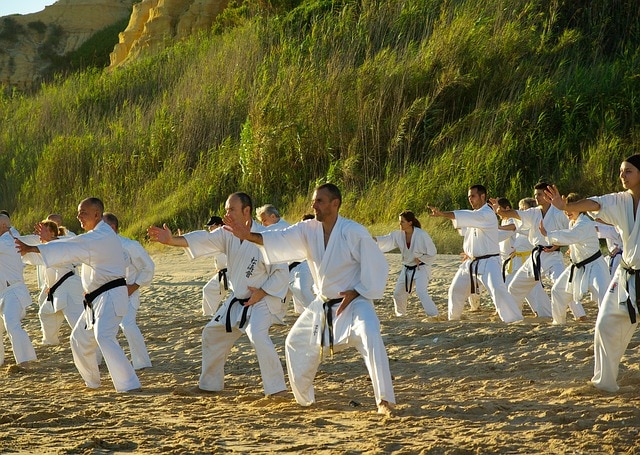
There are no age limits or restrictions of any kind when it comes to martial arts. You are not required to meet any predetermined criterion of fitness, skill or flexibility. You are joining these classes to learn those skills, to begin with. Anyone, old or young can learn different kinds of combat techniques.
The best way to begin with martial arts is to join a class. One of the best things about any format you choose is that it is an independent sport where you do not have to rely on anyone else, but you will need an instructor to help you understand the moves and the logic behind the exercises.
After this, the impetus is on you. If you are disciplined and focused, you will gain a lot from the training apart from just enjoying the exercises.
All that you need for your first session of martial arts is:
- Comfortable clothes
- A water bottle
- An attitude of learning and the ability to have fun
Searching for a martial arts class within your area is a good way to get started. You may be able to hire a personal trainer or join a group fitness class to learn.
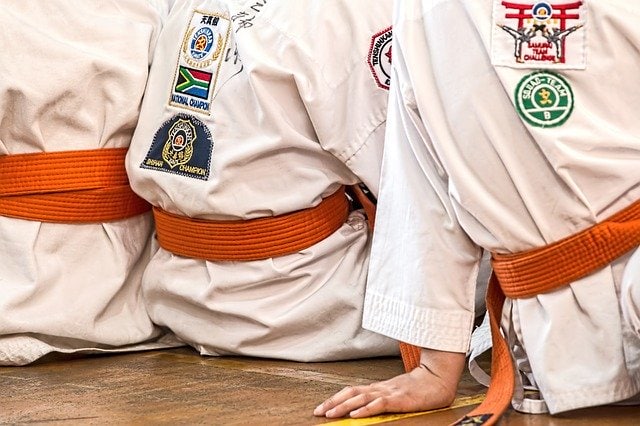
And remember, the most important factor is that you have fun and stay motivated so that you can start karate-chopping those wooden blocks in no time!



